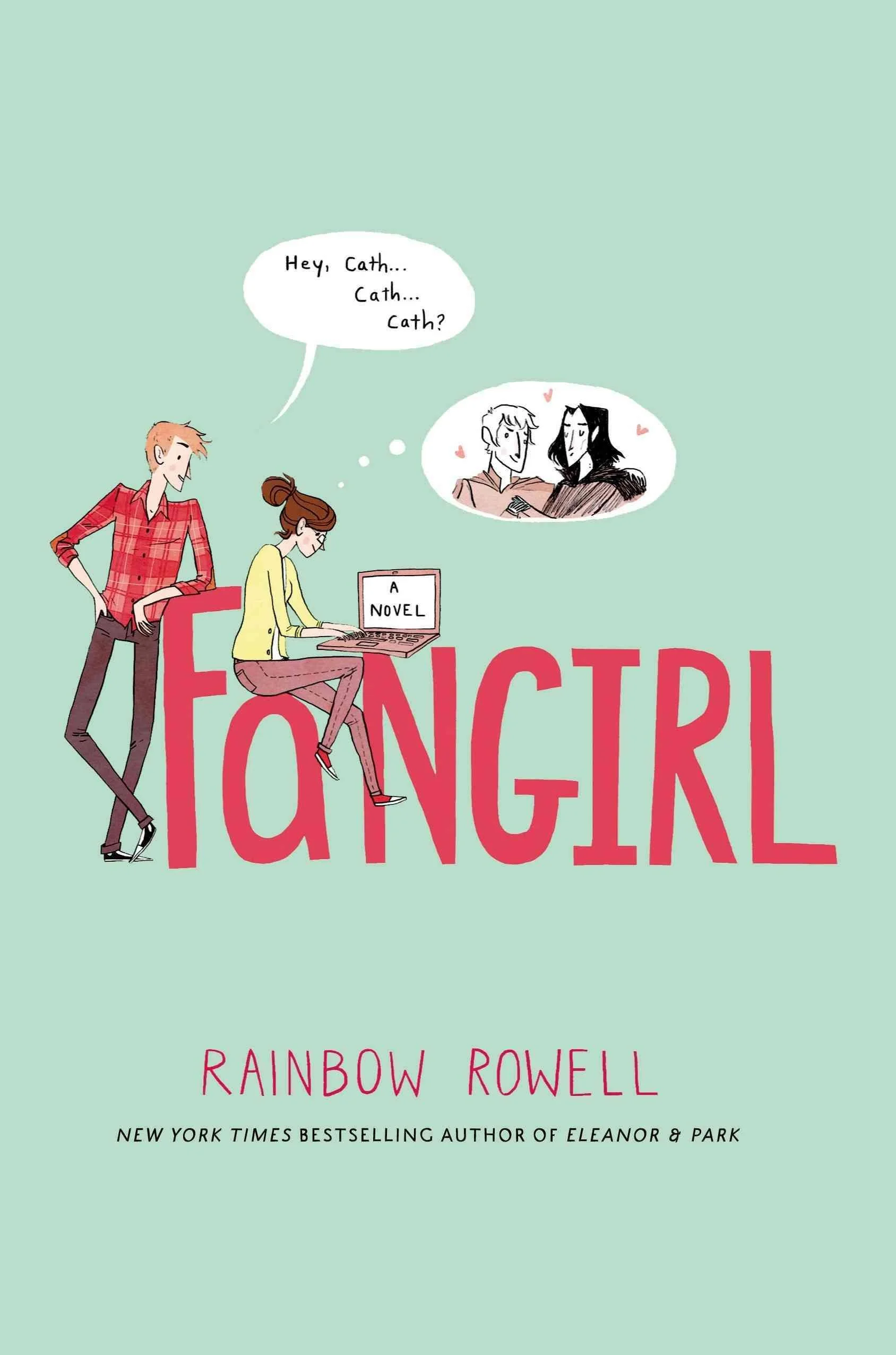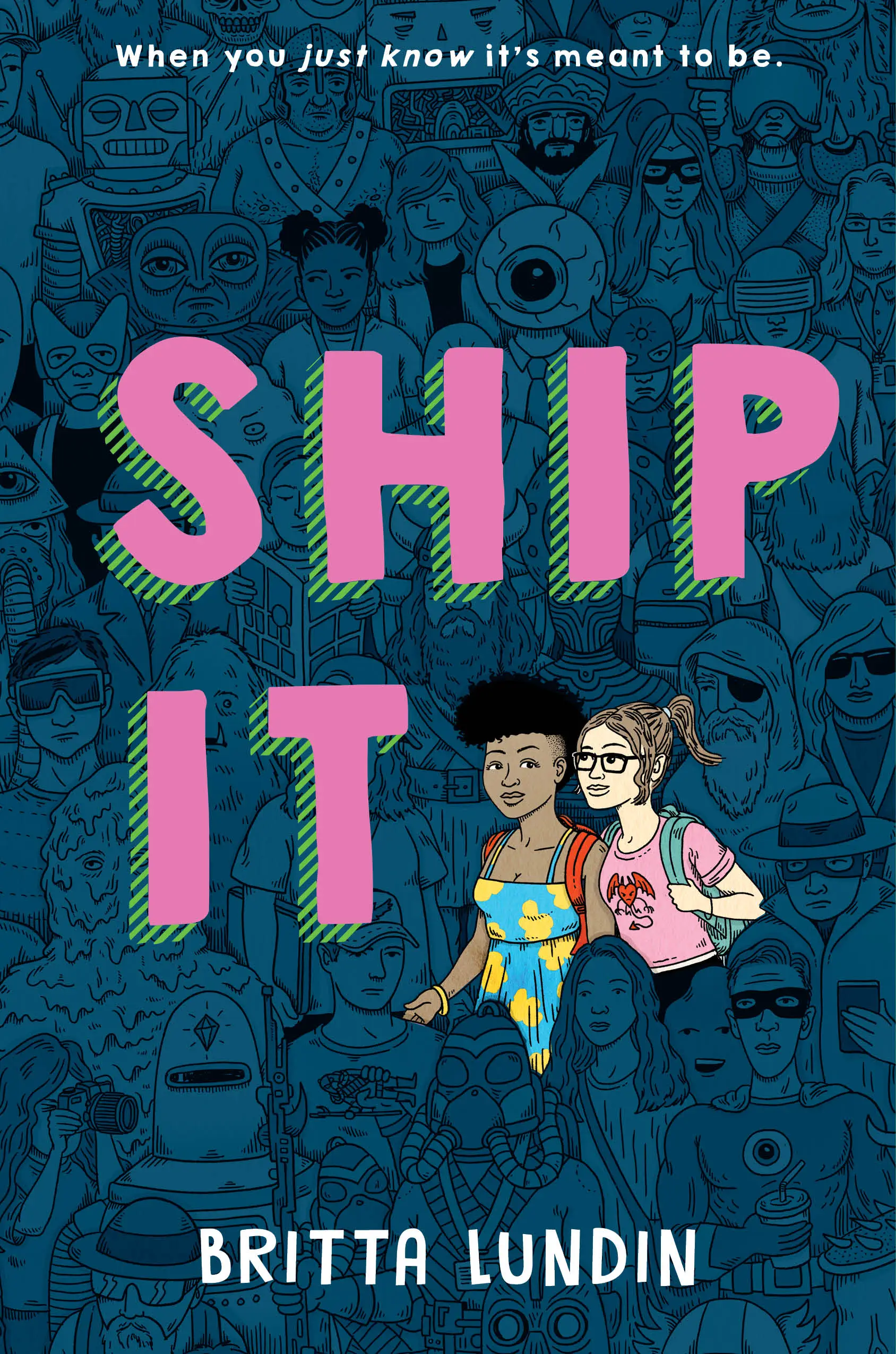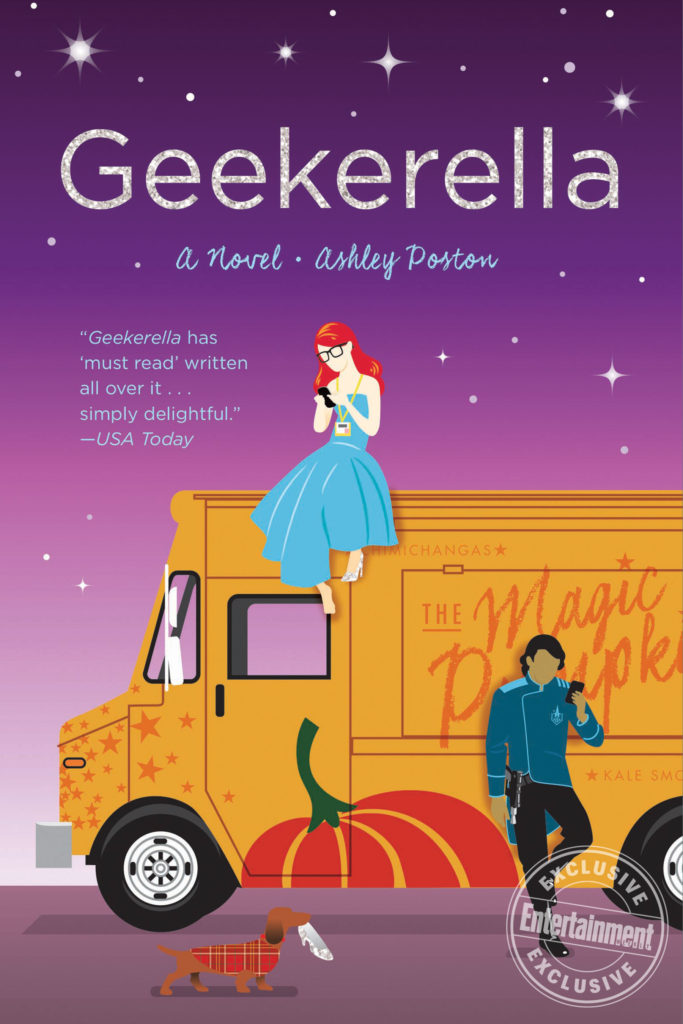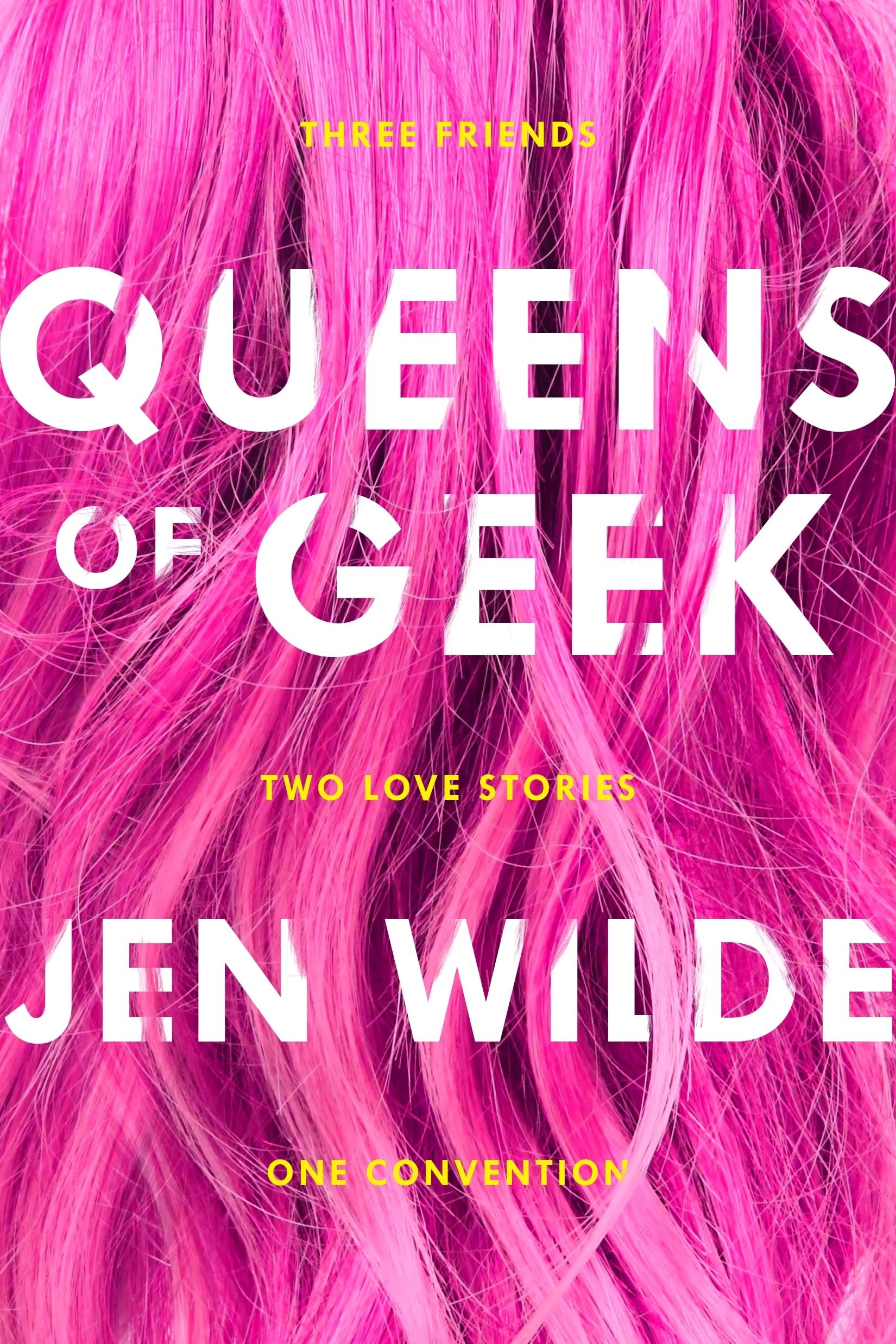Table of Contents Show
Who doesn’t love a good book, especially if that book is about fandom? As geek culture has grown over the past decade, more authors have released books about the fannish experience. These books examine all parts of geek subculture, such as cosplay, fanfiction, and conventions, and dig deep into the psyche and community of fans. If you’re looking to expand your personal or classroom library into the world of fandom, these are five titles you must check out.
Fangirl By Rainbow Rowell
Cath is a college freshman whose only goal is to complete her fanfiction “Carry On, Simon” before the release of the final book in the Simon Snow series. However, she must work to find a balance between her fandom life and her real life. Cath struggles to maintain a relationship with her twin sister Wren, and her introverted nature makes it difficult for her to establish new relationships in college. Along the way, Cath slowly opens up to her roommate Reagan, her writing partner Nick, and the extroverted Levi. Fangirl has gained such a large following that Rowell even wrote and published Cath’s fanfiction as books: Carry On, Wayward Son, and Any Way The Wind Blows.

Fangirl highlights the importance of fandom in our formative years. Cath and Wren have relied on Simon Snow as an emotional support to deal with their mother’s abandonment and bipolar father. While Wren has begun breaking away from Simon Snow, Cath continues to cling to it– as she similarly tries to cling to her own childhood. While Cath’s story is ultimately about growing up and being confident in yourself, she never leaves the Simon Snow fandom behind, ultimately reminding readers that your interests are not tied to your maturity.
The novel also illustrates some unique elements of fandom culture. Cath loves to write fanfiction, specifically slash fiction (the pairing of two same-sex characters), and eloquently describes fan culture to Levi. Her fanfiction “Carry On, Simon” is also incredibly popular within the Simon Snow community, and Cath holds status as a Big Name Fan, with her stories wildly impacting the people around her.
Ship It By Britta Lundin
Claire loves the show Demon Heart. More specifically she loves the non-canonical gay ship, Smokey/Heart. But when Claire gets into an argument with Smokey’s actor, Forrest, at a convention over her ship, she ends up as part of a PR stunt to reestablish trust with Demon Heart fans. The two continually clash over Smokey/Heart as they travel to different conventions together. As time goes on, the two begin to see the other side of the fan/creator dichotomy. Forrest works on deconstructing his own toxic masculinity and recognizing why Smokey/Heart might be so important to the fans who ship it. Meanwhile, Claire learns the struggles and setbacks of Hollywood and fame while re-thinking her own sexuality.

Told through the perspectives of both characters, Ship It tackles fandom issues head-on. It ultimately addresses an issue of fan entitlement (( Sugah, Jamie. “Ship It” Sounds Cute But May Actually Do Shippers a Disservice”. The Geekiary, 2018.)) and how fans will often attempt to sway actors, directors, and producers to tell a story that is specific to their tastes. While Claire’s outburst at the Demon Heart panel ultimately ends with her and Forrest growing as people, she demonstrates the attitude of a self-centered fan. Meanwhile, Forrest represents everything that is wrong with Hollywood.
He is a cisgender, heterosexual, white man who also has all the privileges that come with fame. By unlearning his toxic masculinity, he reveals many of the social issues that are present within modern Hollywood. Ship It brings proper attention to the often strained relationship between fans and creators. While the internet and conventions allow audiences and producers to have a relationship, they also create opportunities for strife and disrespect from both sides. The story highlights a need for understanding; fans should respect the boundaries established by actors and creators should work to validate and sympathize with fans’ desires.
Gena/Finn By Hannah Moskowitz & Kat Helgeson
You’ll never know where you’ll meet your best friend — sometimes it may be online. Gena is an 18-year-old student who writes fanfiction. Finn is a 22-year-old, down-on-her-luck artist. They both love the TV show Up Below. Gena and Finn become immediate friends after meeting in an online forum and quickly find themselves texting all the time and meeting up in person. They confide in each other about their personal lives: Finn talking about her troubles with her boyfriend and Gena opening up about the hallucinations she suffered as a child. Their friendship is powerful and genuine, but when disaster strikes the two must rely on the other to work through their feelings of failure, loneliness, and grief.

Gena/Finn is a powerful story about how fandom creates everlasting bonds between people. Gena and Finn speak with realistic voices, perfectly mimicking the language and tone that fans often use in online chatrooms and in private conversations. Gena and Finn also demonstrate how fans can make friends regardless of age or stages of life. While Gena is just beginning college, Finn has already graduated and has moved in with her boyfriend. Their friendship is one that is highly relatable, and many fans can likely find a parallel in their own lives.
Their friendship also shines in the face of disaster – from small personal issues to life-changing problems. Gena/Finn exemplifies how fandom intertwines itself into our lives. At the end of the story, Gena and Finn find themselves split between their personal grief and grief for their fan community. The novel is an expert case study of the love between friends and the fandom that brought them together.
Once Upon A Con Series (Geekerella, The Princess And The Fangirl, Bookish And The Beast) By Ashley Poston
The Once Upon A Con series weaves together a collection of tales all taking place at Excelsi-Con and the Starfield fandom. Each book is inspired by a different fairy tale, and carefully connects each of their lives. In Geekerella, Elle decides to escape her controlling step-mother by winning a Starfield cosplay contest, hosted by Darien– who is unsure about his role as the new Prince Carmindor. The Princess and the Fangirl has Imogen (a Starfield super-fan trying to save her favorite character from being killed off) switch places with Jess (an actress who has grown tired of playing Princess Amara) as they attempt to find a leaked copy of a movie script. In Bookish and the Beast, Hollywood royalty Vance Reigns hides from paparazzi in a library where he meets bookish-fan Rosie.

The series explores the fictional Starfield series through the eyes of several different characters, both fans and actors alike. The characters are absolutely steeped in geek culture, making several references to other real-world fandoms, such as Doctor Who and Star Trek. What the series does particularly well is create its own fleshed-out fictional fandom. Reading about Starfield through the eyes of multiple characters allows the audience to view fandom as a holistic experience. Each character in some way impacts the larger Starfield community, demonstrating how everyone in a fan community is connected.
Taking it a step further, by using fairy tales as the backbone for each story, the series also acts as a metacognitive exercise in how all stories are inspired by something else. Readers will spend time making connections between the classic fairy tales and real-life elements of the series, and grow to appreciate how ubiquitous stories can be.
Queens Of Geek By Jen Wilde
Three Australian friends, Charlie, Taylor, and Jamie are attending their first-ever American convention, Supacon. Charlie is a vlogger and actress who is promoting her new movie, but she meets the internet-famous Alyssa — whom she quickly develops a crush on. Taylor is hoping to win a cosplay contest with Jamie’s help, only to realize she might have feelings for him.

Queens of Geek offers some much-needed diversity to the fictional fandom genre. Charlie occasionally mentions being an Asian actress and how that has affected her career and relationship with the film industry. She is also open about her bisexual identity throughout the story, even defending herself to her ex-boyfriend and co-star Reese Ryan. Charlie’s inclusion in the story helps to remedy the problem that many fiction works about fandom tend to center on white, straight women.
Taylor also brings something inclusive to the table. She is described throughout the novel as being shy, easily overwhelmed, and fearing change. Taylor reveals that she is autistic, upon meeting another autistic artist at the convention. While their interaction is brief, Taylor discusses her late diagnosis and how meaningful it is to meet another autistic girl. The interaction is heartwarming, and draws attention to the severe lack of disabled characters in all of entertainment (( Broomall, Kim. “Queens of Geek”. Social Justice Books. )).
Why Read About Fictional Fandoms?
Reading about fictional fandoms may seem counterintuitive. As fans, we often believe that we understand the fan experience better than anyone else. So why read about a fan community that doesn’t exist? When we see fandom only through our own experiences, we tend to miss some of the problems that exist within our communities. These books bring up concerns about fan entitlement, mental illness, and representation that are often not talked about in fannish spaces.

By creating fictional characters and fandoms, readers can safely explore and question their own fan experiences. While fandom is wonderful, we also need to be mindful of the spaces we inhabit whether they are physical or digital. Fans carry a lot of responsibility to be kind and respectful of each other as well as to the producers of our favorite media. Of course, while these books can serve as reminders of the concerns within fandom, they also highlight the positives.
Fan communities can bring people together and create life-long relationships. Fandom guides us through our formative years and helps us through emotionally difficult times. It is worthy of celebration!
